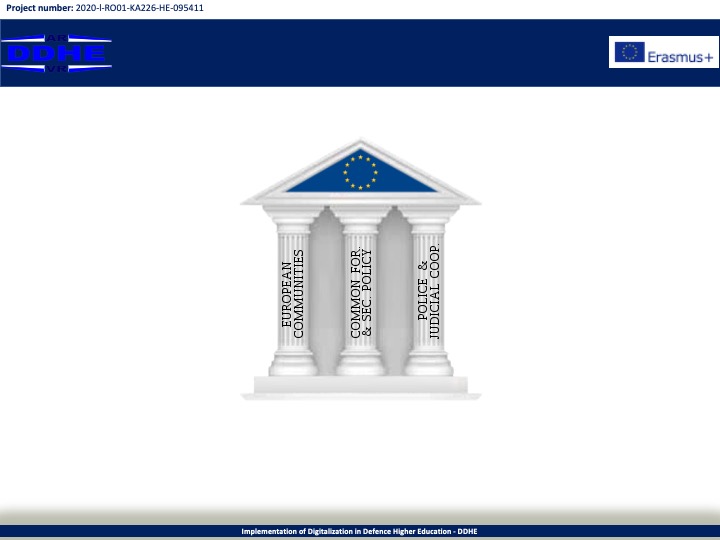
History
The post-war period saw several short-lived or ill-fated initiatives for European defence integration intended to protect against potential Soviet or German aggression: The Western Union (WU, also referred to as the Brussels Treaty Organisation, BTO) and the proposed European Defence Community (EDC) were respectively cannibalised by the North Atlantic Treaty Organisation (NATO) and rejected by the French Parliament. The largely dormant Western European Union (WEU) succeeded the WU's remainder in 1955.
In 1970 the European Political Cooperation (EPC) brought about the European Communities' (EC) initial foreign policy coordination. Opposition to the addition of security and defence matters to the EPC led to the reactivation of the WEU in 1984 by its member states, which were also EC member states.
European defence integration gained momentum soon after the end of the Cold War, partly as a result of the EC's failure to prevent the Yugoslav Wars. In 1992, the WEU was given new tasks, and the following year the Treaty of Maastricht founded the EU and replaced the EPC with the Common Foreign and Security Policy (CFSP) pillar. In 1996 NATO agreed to let the WEU develop a so-called European Security and Defence Identity (ESDI). The 1998 St. Malo declaration signalled that the traditionally hesitant United Kingdom was prepared to provide the EU with autonomous defence structures. This facilitated the transformation of the ESDI into the European Security and Defence Policy (ESDP) in 1999, when it was transferred to the EU. In 2003 the EU deployed its first CSDP missions, and adopted the European Security Strategy identifying common threats and objectives. In 2009, the Treaty of Lisbon introduced the present name, CSDP, while establishing the EEAS, the mutual defence clause and enabling a subset of member states to pursue defence integration within PESCO. In 2011 the WEU, whose tasks had been transferred to the EU, was dissolved. In 2016 a new security strategy was introduced, which along with the Russian annexation of Crimea, the British withdrawal from the EU and the election of Trump as US president have given the CSDP a new impetus.
Since the end of World War II, sovereign European countries have entered into treaties and thereby co-operated and harmonised policies (or pooled sovereignty) in an increasing number of areas, in the so-called European integration project or the construction of Europe (French: la construction européenne). The following timeline outlines the legal inception of the European Union (EU)—the principal framework for this unification. The EU inherited many of its present responsibilities from the European Communities (EC), which were founded in the 1950s in the spirit of the Schuman Declaration.
Treść jest rozpowszechniana na licencji Pewne Prawa Zastrzeżone Uznanie Autorstwa Na Tych Samych Warunkach 4.0